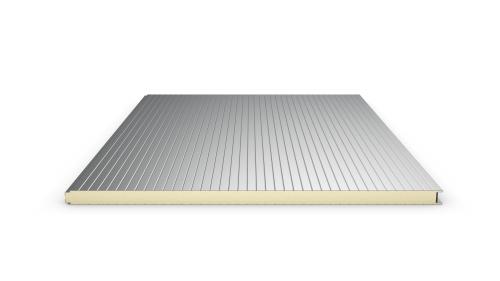What is a Sandwich Panel Wall?

Depending on the material and the construction of the wall, a sandwich panel wall can be used in many different applications. For example, they can be used for a Multipurpose Building or a Fire protection building.
Insulating sandwich panel
Whether it's a new building or renovation, insulated sandwich panel wall can give you a high level of thermal insulation. It has many advantages, especially when it comes to cost savings. You can also save time on installation and maintenance.
Sandwich panels are made from two thin sheets, which are then covered with a thick insulation material. The thickness of the insulation board depends on the type of application. The most common thickness is around 150-200 mm. The outer sheet is generally made from galvanised steel sheet, while the inner sheet is made from a material such as glass-fibre reinforced plastic.
Sandwich panels are available in different materials and can be used to clad the exterior or internal walls of a building. They are particularly useful for industrial buildings and cold storages.
Sandwich panels are easy to install and maintain. They can be adapted to various applications, such as cold rooms, freezers, warehouses, industrial centres, and even sports centers. They are also a good choice for interior partitions. They can be made with additional layers to increase their insulation capabilities.
Light weight building material
Various light weight building materials are used to make sandwich panel wall panels. Compared to masonry, these panels have several advantages. Besides a lightweight design, they offer high strength-to-weight ratio and good acoustic properties.
Sandwich panel design also provides good thermal insulation and non-corrosiveness. Light weight building materials such as Balsa Wood, Balsa Wood veneer, and composite panels can be used in sandwich panel wall panels.
Plywood is a good candidate for sandwich panel facings. It has good dimensional stability and can be bonded to the core reliably with proven adhesives.
Composite sandwich panels also offer more stiffness and strength. They also cost less because they use two materials. In addition, sandwich panels can be designed to meet diverse requirements.
Sandwich panels also have their own drawbacks. For example, they may require preservative treatment. They may also exhibit poor performance under uncertain loads. These drawbacks can be mitigated with proper construction techniques.
In addition, sandwich panels have large surface areas. Their properties, such as stiffness, depend largely on the characteristics of their facings.
Multipurpose building
Using a sandwich panel wall is a simple, effective and economical way to build a multipurpose building. However, there are several issues to consider before constructing your sandwich building. First, your building needs to be designed for your intended purpose. In addition, the panels need to be structurally sound and cost-effective to produce.
Several structural tests have shown that sandwich panels have excellent structural properties. However, the stability of these panels varies with the weather conditions and the type of facings used.
The age of a sandwich panel also affects its structural properties. The structural properties of a sandwich panel are generally reduced with increased moisture content. A typical sandwich wall panel facing has an effective modulus of about 900,000 pounds per square inch.
A sandwich panel consists of a core made from an insulating material between two sheet metal skins. The thickness of the core determines its heat-insulating properties. In addition, the facings control the size and shape of the panel.
Fire protection
Using sandwich panel walls in a building is an affordable way to create a fire resistant barrier. The material is lightweight, easy to install and provides inexpensive insulation. These panels also have many unique technical features. They are used in a wide variety of applications. They are also effective for passive fire protection and soundproofing.
Sandwich panels are made of a core of insulation material, usually steel or aluminum, sandwiched between two skins. The core material is always covered by a polyurethane coating.
When a fire breaks out, the combustible insulation inside the panel adds heat and toxic gas. This makes the fire more difficult to extinguish. It also adds a large amount of smoke. Smoking should be banned in buildings that use combustible sandwich panels.
The construction industry has promoted the development of new firefighting techniques. The development of new firefighting systems has also led to the development of insulated panel systems. These systems deliver high thermal and fire performance, and are suitable for both internal and external walls.
Post Your Ad Here
Comments